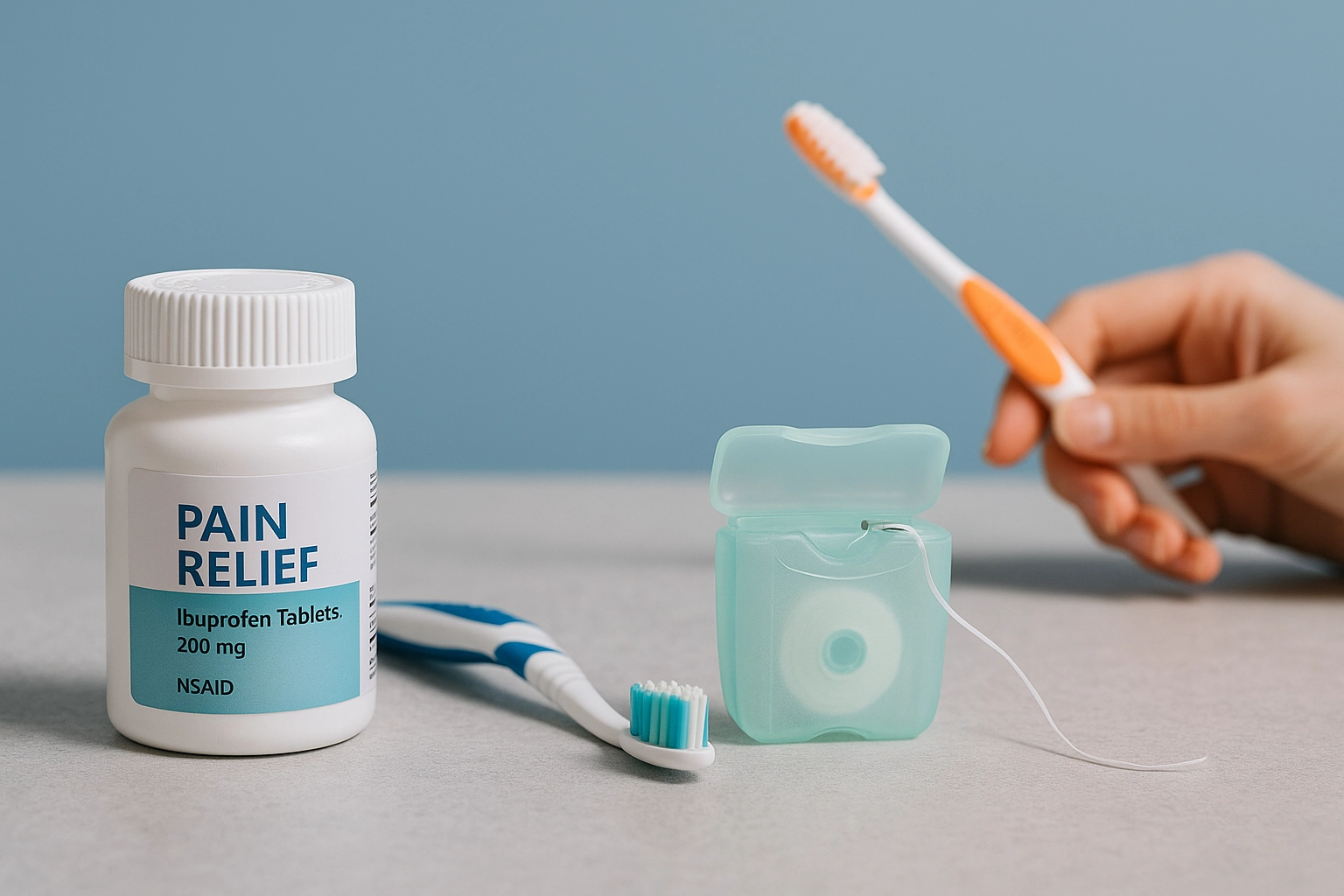
Full Mouth Debridement: What to Expect & Why It Helps
Maintaining optimal oral health is not just about having a bright smile; it's integral to overall well-being. Neglecting routine dental cleanings and examinations can lead to the accumulation of plaque and tartar, fostering an environment ripe for periodontal diseases.
For individuals who have avoided dental visits for extended periods, a procedure known as full mouth debridement (FMD) becomes essential.
This treatment serves as a foundational step in restoring oral health, particularly when standard cleanings are insufficient due to extensive buildup.
Understanding Full Mouth Debridement
To appreciate the significance of FMD, it's crucial to understand what the procedure entails and how it differs from other dental cleanings.
What Is Full Mouth Debridement?
Full mouth debridement is a non-surgical dental procedure aimed at removing heavy plaque and tartar deposits from the teeth and beneath the gumline. Unlike routine cleanings, which maintain oral health, FMD is necessary when significant buildup obstructs the dentist's ability to conduct a comprehensive examination.
This procedure is often the first phase in treating periodontal diseases, setting the stage for more targeted therapies like scaling and root planing.
Differentiating FMD from Other Dental Cleanings
While standard prophylaxis focuses on maintaining healthy teeth and gums, FMD addresses more severe conditions where excessive plaque and tartar hinder diagnostic assessments.
Scaling and root planing, on the other hand, delve deeper, cleaning below the gumline to treat existing periodontal disease. FMD is thus a preparatory step, enabling accurate diagnosis and effective treatment planning.
When Is Full Mouth Debridement Necessary?

Recognizing the signs that necessitate an FMD can help in seeking timely dental intervention.
Indicators for FMD
Patients exhibiting signs of advanced gum disease—such as inflamed, bleeding gums, persistent bad breath, or noticeable tartar buildup—may require FMD.
It's particularly indicated when the accumulation is so extensive that it prevents a thorough dental examination. Individuals who have not undergone dental cleanings for several years or those with dental phobias are common candidates for this procedure.
Consequences of Delaying Treatment
Postponing necessary dental care can exacerbate oral health issues, leading to more invasive treatments. Without timely intervention, plaque and tartar continue to accumulate, increasing the risk of periodontal disease progression, tooth decay, and eventual tooth loss. FMD serves as a critical intervention to halt this progression and restore oral health.
The Procedure: What to Expect During FMD
Understanding the steps involved in an FMD can alleviate anxiety and prepare patients for the procedure.
Initial Assessment
The process begins with a comprehensive oral examination, where the dentist assesses the extent of plaque and tartar buildup. Due to the heavy accumulation, a full evaluation might not be possible until after the debridement. Therefore, FMD is performed to clear the way for a more accurate diagnosis.
Debridement Process
During the procedure, the dental hygienist employs both manual instruments and ultrasonic devices, such as the Cavitron, to dislodge and remove plaque and tartar.
The ultrasonic scaler uses high-frequency vibrations and a water spray to break up deposits, while manual tools ensure thorough cleaning of all tooth surfaces. The entire process typically spans one to two appointments, depending on the severity of the buildup.
Managing Discomfort: Anesthesia and Patient Comfort

Addressing potential discomfort is essential to ensure a positive patient experience during FMD.
Pain Management Strategies
Understanding that dental procedures can cause anxiety, especially for those with dental phobias, various pain management options are available. Local anesthesia is commonly used to numb the treatment area, ensuring a pain-free experience.
For patients with heightened anxiety, sedation options such as nitrous oxide may be offered to promote relaxation during the procedure.
Ensuring a Comfortable Experience
Dental professionals prioritize patient comfort, employing techniques to minimize discomfort and anxiety. Clear communication about the procedure, gentle handling, and a supportive environment contribute to a more pleasant experience. Post-procedure, patients are provided with aftercare instructions to manage any residual discomfort effectively.
Post-Procedure Care and Recovery
Proper aftercare is vital to ensure healing and maintain the benefits of the debridement.
Immediate Aftercare
Following FMD, patients may experience mild sensitivity or gum tenderness, which typically subsides within a few days. Dentists often recommend over-the-counter pain relievers and advise avoiding extremely hot or cold foods and beverages temporarily. Maintaining gentle oral hygiene practices during this period is crucial to facilitate healing.
Long-Term Maintenance
Post-debridement, a follow-up appointment is essential to assess the gums and determine if further treatments, such as scaling and root planing, are necessary. Adhering to a rigorous oral hygiene routine—including regular brushing, flossing, and dental check-ups—is vital to prevent the recurrence of plaque and tartar buildup.

By eliminating heavy plaque and tartar buildup, FMD allows dental professionals to perform more accurate assessments of your oral health. With a clearer view of the teeth and gums, dentists can identify underlying issues such as cavities or gum disease that may have been previously obscured.
Prepares for Further Dental Treatments
FMD often serves as a preparatory step before undertaking additional dental procedures. By thoroughly cleaning the mouth, it creates an optimal environment for treatments like scaling and root planing, restorative work, or even cosmetic procedures, ensuring their effectiveness and long-term success.
Improves Aesthetic Appearance
Beyond health benefits, FMD can also enhance the appearance of your teeth. The removal of plaque and tartar can eliminate surface stains, leading to a brighter and cleaner smile, which can boost self-confidence and encourage better oral hygiene practices.
Freshens Breath
Persistent bad breath, or halitosis, is often caused by the accumulation of bacteria in plaque and tartar. By eliminating these deposits, FMD effectively reduces the bacterial load in the mouth, resulting in fresher breath and improved social interactions.
Supports Overall Health
Maintaining good oral health is closely linked to overall well-being. Conditions like periodontal disease have been associated with systemic health issues such as heart disease and diabetes. By addressing severe plaque and tartar buildup through FMD, you reduce the risk of these associated health problems, contributing to better overall health.
By understanding and appreciating these benefits, patients can recognize the importance of full mouth debridement in achieving and maintaining optimal oral health.
Potential Risks and Considerations

While full mouth debridement is a beneficial procedure for many, it's essential to be aware of potential risks and considerations to make informed decisions about your oral health.
Temporary Side Effects
Some patients may experience temporary side effects following the procedure. These can include increased tooth sensitivity, especially to hot or cold temperatures, and mild gum discomfort. Such symptoms typically subside within a few days and can be managed with desensitizing toothpaste or over-the-counter pain relievers.
Importance of Professional Care
It's crucial to have FMD performed by qualified dental professionals who can assess individual needs and tailor the procedure accordingly. Attempting to remove heavy plaque and tartar at home is ineffective and can cause harm to the teeth and gums.
Integrating FMD into a Comprehensive Dental Care Plan
Incorporating full mouth debridement into your overall dental care strategy ensures long-term oral health and prevents future complications.
Collaborative Treatment Approach
FMD is often the first step in a series of treatments aimed at restoring oral health. After the initial debridement, your dentist may recommend additional procedures such as scaling and root planing or periodontal therapy, depending on the severity of gum disease. This collaborative approach ensures that all aspects of your oral health are addressed comprehensively.
Long-Term Oral Health Maintenance
Maintaining the results of FMD requires a commitment to good oral hygiene practices. Regular brushing and flossing, along with routine dental check-ups, are essential to prevent the recurrence of plaque and tartar buildup. Your dental professional may also provide personalized advice on diet and lifestyle choices to support your oral health.
Frequently Asked Questions (FAQs)
What is the difference between full mouth debridement and a regular dental cleaning?
A regular dental cleaning, or prophylaxis, is a preventive measure aimed at maintaining oral health by removing minor plaque and tartar buildup. In contrast, full mouth debridement is a more intensive procedure designed to remove extensive plaque and tartar that hinder a comprehensive dental examination.
Is full mouth debridement painful?
While some discomfort may be experienced during or after the procedure, local anesthesia and sedation options are available to ensure patient comfort. Post-procedure sensitivity is typically mild and temporary.
How long does the procedure take?
The duration of FMD varies depending on the extent of plaque and tartar buildup. It may be completed in a single visit or require multiple appointments. Your dentist will provide a treatment plan tailored to your specific needs.
Will I need additional treatments after FMD?
Yes, FMD is often the first step in treating periodontal disease. Following the procedure, your dentist will assess your oral health and may recommend further treatments such as scaling and root planing or periodontal therapy.
How can I prevent the need for full mouth debridement in the future?
Maintaining good oral hygiene practices, including regular brushing and flossing, along with routine dental check-ups, can prevent excessive plaque and tartar buildup. Avoiding tobacco use and managing underlying health conditions also contribute to better oral health.
Conclusion
Full mouth debridement is a crucial procedure for individuals with significant plaque and tartar buildup, serving as the foundation for restoring oral health.
By understanding what to expect and the importance of this treatment, patients can take proactive steps toward achieving and maintaining a healthy smile.
Regular dental visits and diligent oral hygiene practices are key to preventing the need for such intensive procedures in the future.










